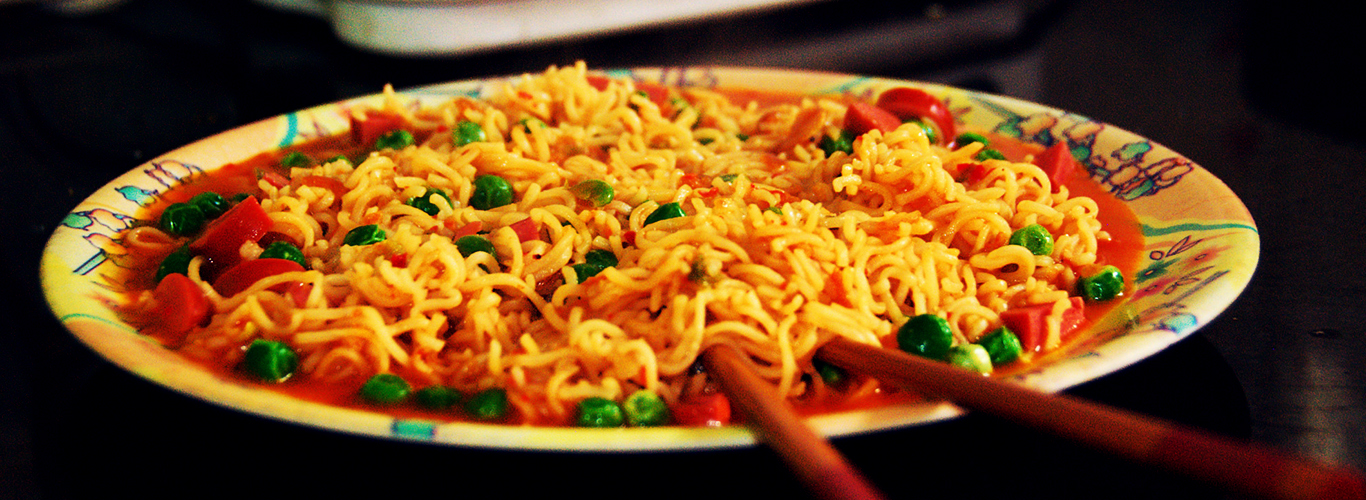The brand evolution of Maggi
Maggi, came into existence in Switzerland, courtesy Julius Maggi. In 1863, the Industrial Revolution in Switzerland, created factory jobs for women, leaving them with very little time to prepare meals.
The Swiss Public Welfare Society asked Julius Maggi to make something which would check the criteria of being easily digestible, as well as, something that’d take very less time to prepare.
The experiments were a success, which resulted in the production of instant soup of two different flavours.
Maggi was later acquired by Nestle, in the very year India acquired its Independence, i.e. the year of 1947.
Maggi arrived in India, in the year 1983, the same year the Indian Cricket Team, led by Kapil Dev lifted the World Cup, for the first time.
Maggi, with its 2-minutes tagline, caught the nation’s imagination. Something which could be cooked to perfection in just 2 minutes, by children and adults alike, and was utterly delicious as well? Slack jawed, stood the people.
The 2 – minute ad campaign had the nation hooked.
Also, the “First Movers”, as maggi is lovingly called in the noodle business, with Top Ramen, Wai wai and Yippee tagging along much later, had the added advantage of arriving at a time when the Indian women were making a transformation from the stay-in-house wife to the working woman. The ad epitomised the “Maggi Mom”, a loving mother and spouse, who efficiently juggled the duties of the household and her office and managed to churn up snacks (Read Maggi) for her hungry kids as well.
Nestle, was quick to recognise that India, newly freed from the British rule, would like to minimise its dependence on other country’s export and focus on its own surplus.
Nestle formed its subsidiary, in 1961, setting up its first Indian subsidiary in Moga, Punjab, dictated by the then Prime Minister of India, Pt. Jawaharlal Nehru to bolster the weakened milk economy of Punjab.
In the next 25 years, Maggi was to become the next staple of the country after wheat and rice, as per the words of Kiran Khalap, a Mumbai-based advertising expert. Maggi enjoyed 90% of the noodle market, basking in the glory of an acclaimed taste, subjecting itself to experimentation now and then, but ultimately, carrying on with its queenly stature.
Riding on this legacy, when Maggi released its ‘Me and Meri Maggi campaign’, its ad agency Publicis Capital received an staggering 3000+ entries telling how Maggi had contributed to their ‘Kushiyaan’. Maggi, by now, had a cult following.
Economically priced at a mere Rs. 12/-, Maggi has been effectively able to transcend all cultural, age and social barriers.
On June 5, 2015, came havoc, the likes of which the Maggi PR industry had never faced. The Food Safety and Standards Authority of India (FSSAI), ordered a ban on Maggi, following the information that there could be possibly high levels of lead in it.
Social media was flooded by posts from celebs to the common man, from entrepreneurs to the college going student, all mourning the loss of this common food. It was a testimony of the deep rooted loyalty that Maggi had inspired in everyone.
Twitter went on tweeting spree, with #MaggiNoodles trending for days on ends, with bigwigs like Ravinder Singh, Tanmay Bhatt tweeting on the ban.




A few months later, Bombay High court lifted the ban on Maggi, ordering tests for a 100% approval on there being no lead in the product. Thus, Maggi, thankfully made its way back to the Indian market, and phew! Did our growling tummies utter a heartfelt sigh or what?
We don’t take any credit for the branding of maggi. The article above gives insights into the branding of maggi and how it has evolved over the years. At sunSTRATEGIC, a leading voice in the area of social, content, branding, digital, we serve to revive, ignite and elevate brands. To know more, head to sunSTRATEGIC.
Read more blog nike air max thea damen nike air max thea damen nike air max thea damen

